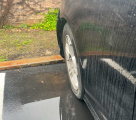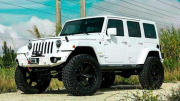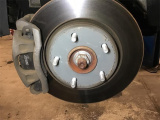
Aftermarket wheels will upgrade the appearance of your ride, letting it stand out in a crowd. With this upgrade, a driver should find the perfect lug nuts to keep the wheels secured while complementing ride aesthetics. Finding the correct lug nuts to match your aftermarket wheels is not as straightforward as most drivers may presume. It is common to meet drivers grappling with the question, “what lug nuts do I need for aftermarket wheels?”
What happens if a driver utilizes stock lug nuts for aftermarket wheel fitment? The designs of most aftermarket wheels compensate for the deficiencies of stock wheels. It means the aftermarket wheels require customized lug nut sizes. They can be larger than stock lug nuts, bear unique seat designs and have varying lengths.
To answer the question, what lug nuts do I need for aftermarket wheels; let us explore the specifics of aftermarket wheels and terminologies for describing lug nuts to make your next purchase simpler and faster.
When should one purchase aftermarket lug nuts?

Lug nuts are crucial for driving safety - they hold wheels in place, keeping car occupants safe while driving on different roads. When driving around with original manufacturer wheels, drivers do not have to worry about spending extra cash on a set of new lug nuts. Unless you have one or more damaged lug nuts.
Everything changes when the driver considers fitting the ride with aftermarket wheels. When purchasing aftermarket wheels, the driver must set aside some amount to buy new lug nuts. A few things will change. The new wheel has a different seat design demanding lengthier or shorter lug nuts having unique thread pitches.
Lug Nut Terminologies
Drivers can select lug nuts for aftermarket wheels from different brands. Each lug nut is defined using the seat and its size. The first thing the drivers should be aware of is the desired size of the lug nut.
Size of the lug nut
Manufacturers use two aspects to define the size of a lug nut. These are:
- Thread size
- Thread pitch
The aftermarket lug nut should fit perfectly on the stud. The stud has a specific outer diameter and pitch. It means the aftermarket lug nut should be the same diameter as the stud. The thread pitch for the lug nut and the stud should match to ensure they fit well and prevent damage to the threads.

For faster lug nut sizing, drivers can refer to the owner’s manual to identify the exact sizes of the stud. The manual defines the length and diameter measurements of the stud. With this information, the driver can pop into an aftermarket accessory shop and pick up a new lug nut.
The seat of the lug nut
The lug nut makes direct contact with the wheel. The seat of the lug nut is the actual area where it makes contact with the aftermarket wheel. The seat design affects the tightness between the lug nut and the wheel.
Drivers can choose from different seat designs. Each design or seat style is designed for use with particular wheel designs. Common seat designs include:
- Conical seat
- Ball seat
- Mag seat
Conical seat
As the name suggests, the seat of the lug nut is inclined. Most aftermarket wheels have a conically shaped seat area, making conical lug nuts the most popular choice among drivers. The conical seat is also called the Turner style and is inclined at 60 degrees.
Conical seat-style lug nuts are easy to work with. The inclination facilitates self-centering when tightening the lug nut.
Ball seat
The ball seat style is unique, and the seating area is shaped like an inverted bowl.
Mag seat
The mag seat style has a flat surface and requires a washer for fitting the aftermarket wheel. The contact area between the lug nut and the wheel is usually flat. Mag seat-style lug nuts are fitted to the stud using separate washers.
Manufacturers use seat styles to classify lug nuts. The lug nuts needed for aftermarket wheels can be categorized as:
- Conical lug nuts
- Spherical lug nuts
- Flat seat lug nuts
- Mag seat lug nuts
- Lug nuts with extended threads
Lug nuts with extended threads usually have a conical seat style and longer shank that permits additional thread engagement.
Lug nut caps
Every lug nut has a cap style to ensure they fit nicely on the stud. Aftermarket lug nuts may have closed or open caps. The lug nuts also come in different sizes depending on the length of the stud. Drivers can pick the long or short lug types. The driver should choose the right cap type to keep the aftermarket wheel tightened for a safe ride.
What does lug nut thread engagement entail?

A lug nut makes several turns before it tightens and secures the wheel in place. The aftermarket lug nut should meet the required turns to maximize driving safety. Drivers may use lug nuts with extended threads if the conventional lug nut does not provide the required tightness. When using such lug nuts, drivers should ensure that the lug holes are big enough to hold the big lug nuts.
Tightening lug nuts for aftermarket wheels
When fitting lug nuts to aftermarket wheels, drivers should look beyond aesthetics. The lug nuts should be tightened properly to secure the wheel and provide the exceptional performance desired by the driver. It is advisable to tighten all lug nuts equally and strictly adhere to the manufacturer’s specifications. The torque requirements for specific vehicles are available in the owner’s manual. Use the right tools to tighten the lug nuts. Do not exceed the specified torque lest you damage the stud.
Conclusion
Lug nuts keep us safe when driving on the road. Drivers should choose the correct size and type of lug nuts when replacing the original manufacturer wheels with aftermarket alternatives. Pay attention to the size of the lug nut, thread pitch, and seat style. The driver should also choose lug nuts with the right cap style and thread engagement for optimal driving safety.
FAQs
Do I need to purchase aftermarket lug nuts?
Drivers need to purchase aftermarket lug nuts if they use aftermarket wheels and the original manufacturer lug nuts cannot hold the wheels well.
What type of lug nuts can I use for aftermarket wheels?
There are several types of lug nuts in the market. Each lug nut is designed for use with particular aftermarket wheels. Drivers can choose from Conical, Spherical, Flat seats, Mag seats, and Lug nuts with extended threads.
Same articles

Wheel Bent Inwards After Hitting Curb
GuidesAccidents occur ranging from minor incidents to more severe ones. Even seemingly minor mishaps, like hitting a curb, can result in some level of damage to your vehicle. On occasion, after such an...

White Trucks With Black Rims
GuidesMany pickup truck drivers may not place significant emphasis on the appearance of their vehicles. However, a closer look at Google search statistics reveals that each month, thousands of individuals...

How to Clean Brake Rotors without Removing Wheels
GuidesYour life is always at risk if any part of your vehicle is compromised; the same is true with brake rotors. To ensure you are secure while driving, clean brake rotors are essential. However, it...

Discussion